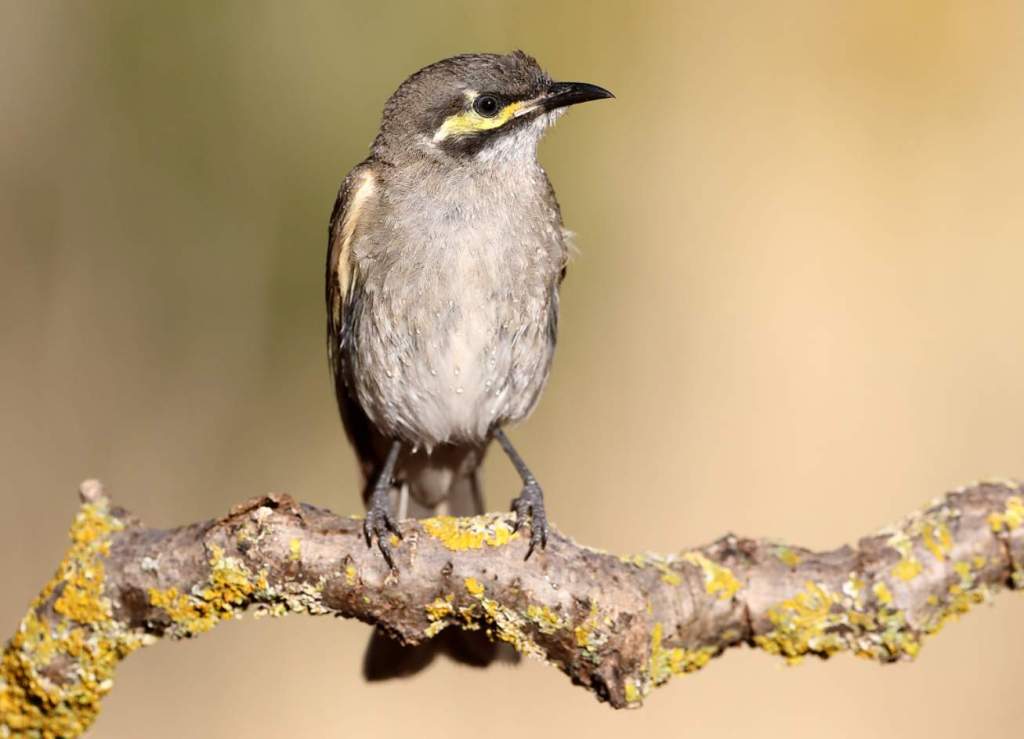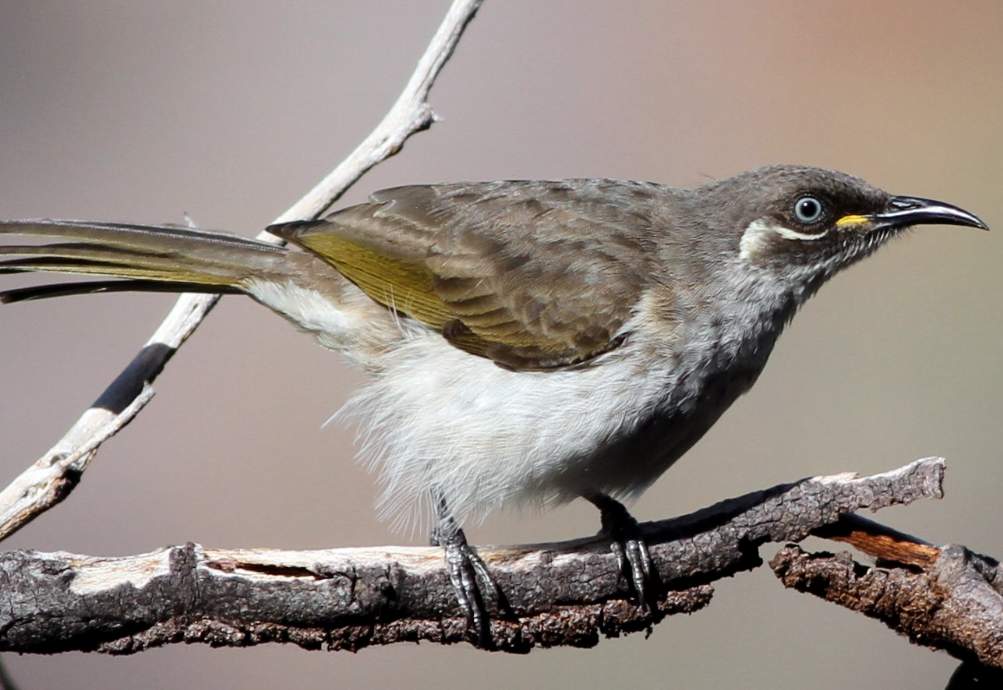Family: The widespread Western Gerygone (Gerygone fusca) belongs to the family Acanthizidae
Habitat: Since the western gerygone is the only gerygone found in the interior of Australia, it does not geographically overlap with other gerygone’s over the majority of its range. Gerygone species are largely allopatric, usually distinguished from one another by their geographic distribution or by their preference for distinct habitats.
The male Western Gerygone marks his territory during the breeding season by continuously whistling a pleasant melody. The male stays close to the female while she constructs the nest.
He perches nearby, singing, occasionally bowing slightly, fanning his white-marked tail, and flicking his wings up and down in display. The pairing seems to be permanent. Only the female incubates the eggs for about 10–12 days. The young, fed by both sexes, fledge about 10-12 days after hatching.
This is the only gerygone to range around Australia to the southwest and to occupy dry habitat, from coastal eucalypt forest in the southwest to mallee in the east and mulga woodland in the center. Its silence and unobtrusiveness when not breeding have suggested that it is migratory in southern regions, but it seems in fact to be rather sedentary except in the southwest, where part of the population shifts as far north as the Kimberley’s in winter.
This is a sister species to the mangrove gerygone that works alone, in pairs, or, rarely, in small, loose groups. Rather restless in its movements, it frequently shakes itself as if its feathers are wet. Even though its habitat is widespread, the Western Gerygone is limited today to three rather isolated populations.
Identification: The adult sexes are alike. The head and upper surface are dull grey washed faintly olive or cinnamon, with an indistinct, off-white stripe on the forehead extending back towards but rarely over the eye, merging with an indistinct white eye-ring; the lores are dusky; and the neck is grey. The flight feathers are grey-brown, often with paler edges. The tail is dark grey-brown with a broad white band across the base of the outer three to five pairs of feathers, a broad black bar near the tip, and large white spots at the tip of all except the central pair.
The throat and upper breast are pearly grey to cream; the rest of the underparts are off-white. The eyes are rich red to brown-red. The bill is black. The feet are dark grey to black. The immature bird’s (as an adult) face, eye rings, sides of the neck, and undersurface are generally faint lemon-yellow. The eyes are cream, buff, or brown. The bill is brown, with a pale horn at the base of the lower bill.
Vocalizations: The western gerygone call is soft chattering in contact by both sexes occasionally when feeding. The western gerygone song consists of a soft but far-carrying, slow chromatic cadence of whistled notes, first rising and then falling away, finishing prematurely; only by male.
Nesting and Breeding: Western Gerygone nesting and breeding occur in August–January; in central and northern Australia, it may be geared to rain. Nest a compact, well-formed oval dome, 200–250 mm long, including a 120 mm long tail; a short hood projects over the side entrance; of bark fiber, grass stems, and other vegetable matter, bound with cobwebs and adorned with spiders’ egg sacs; lined with feathers; suspended from a stem among leafy branchlets of a tree 2–10 meters above ground. Horsfield’s Bronze Cuckoo (Chrysococcyx basalis), shining Bronze Cuckoo (Chrysococcyx lucidus) and Black-eared Cuckoo (Chrysococcyx osculans) often cuckold their nest.
Eggs and Incubation: Western Gerygone lays two or three eggs, matt white to the flesh, sparingly spotted and speckled with dull red-brown, mainly at the larger end, often forming a zone; oval, about 18 x 13 mm. The incubation period is about 10–12 days for females. Young fledge in about 10 days.
Movements: The migration patterns of different populations of western gerygone’s vary; groups in the desert are semi-nomadic, reacting to rainfall that falls farther inland.
Distribution: The bird is found in an arboreal, insectivore habitat of open forest, short, open eucalypt woodlands, mallee, and mulga Acacia scrubs of inland Australia. It is only found below 800-850 meters in altitude.
Races: There are three races.
-
One race, Gerygone fusca, occurs in southwestern Australia, dispersing north to the Kimberleys and east to the Victoria Desert in winter and recurs in isolation on the southern Eyre Peninsula.
-
Another race, G.j exsul, lives in central eastern Australia, from central Victoria north along the western slopes of the Great Dividing Range and adjacent western plains to the foot of the Cape York Peninsula; vagrants may reach the Mount Lofty Ranges, SA.
-
A third race, G.j mungi, inhabits a broad band of semi-desert scrub across central Australia, from the Selwyn Range, Queensland, west and northwest, to the Pilbara and Kimberley, Western Australia.
Diet: The Western Gerygone gleans its food from small insects and aphids in the outer foliage of trees, usually well above the ground. It often hovers about the crowns of trees to capture small flying insects that it has disturbed.
Alternative Names: This bird is also known as White-tailed Warbler, White-tailed Flyeater, Western Warbler, Western Flyeater, Inland Warbler, Fuscous Warbler, Fuscous Flyeater, and Sleepy Dick.
Size: Western Gerygone measures about 100–110 mm in length.
Status: Least Concern on the list of IUCN







